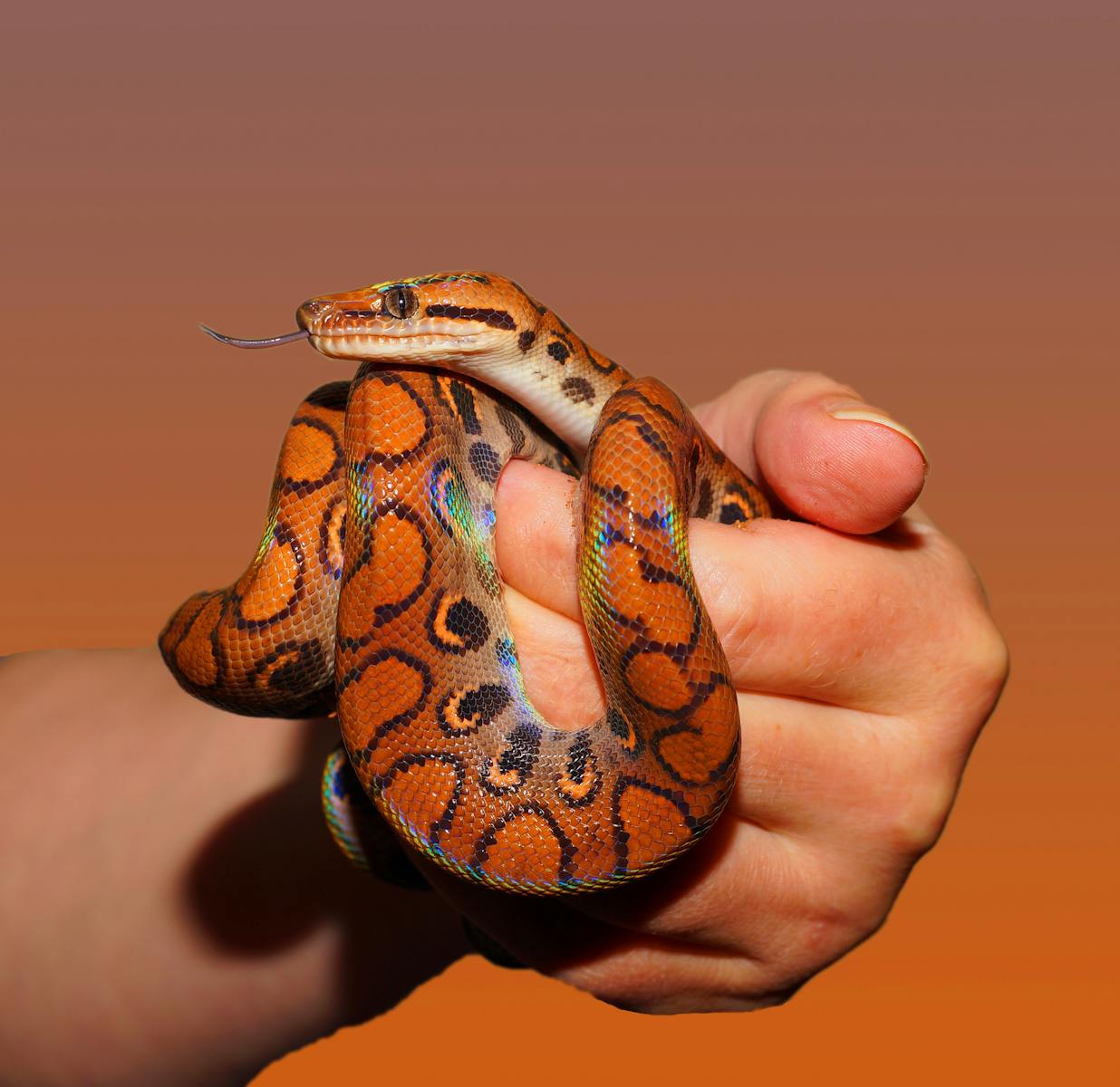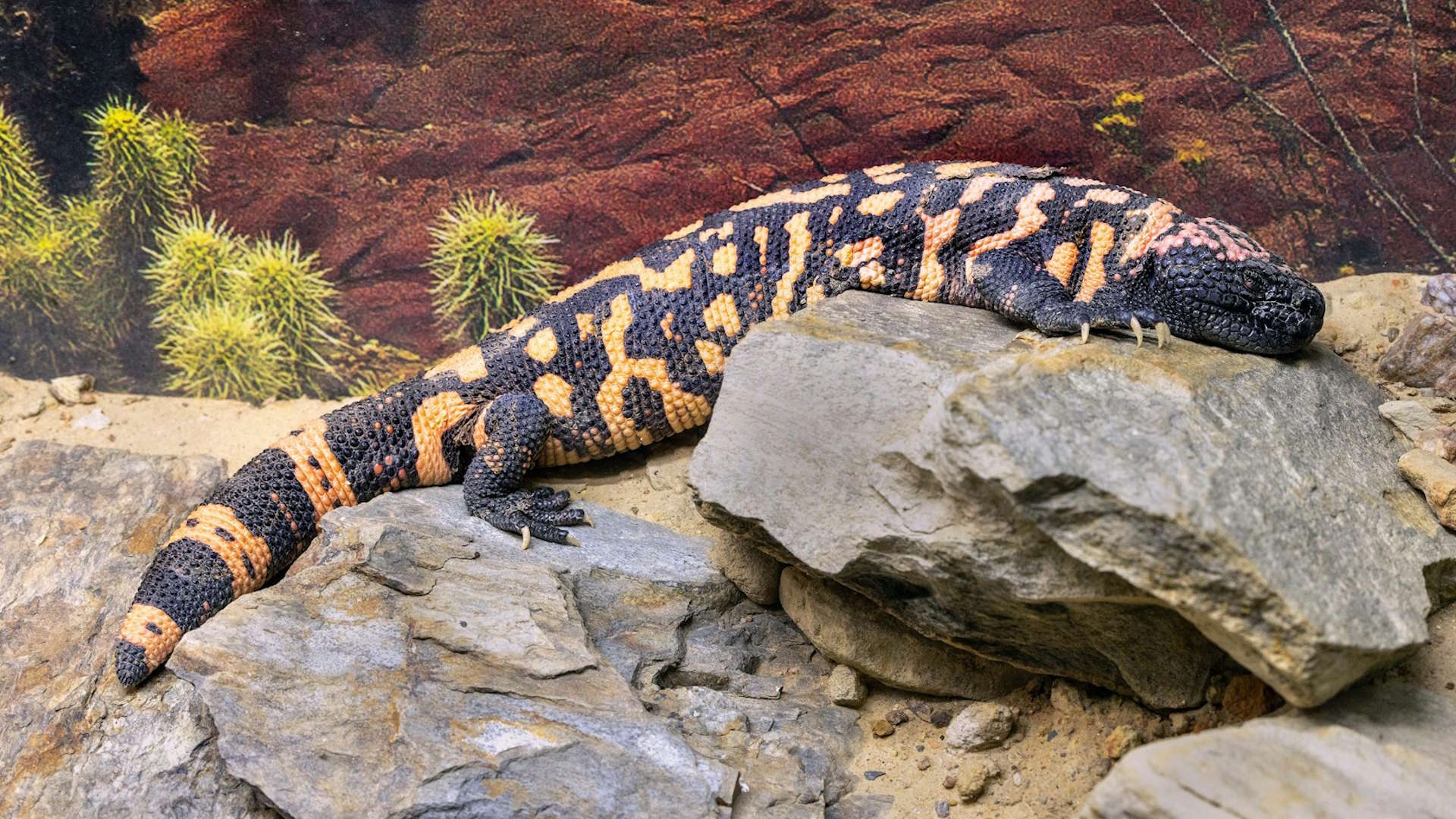When considering a pet snake, many potential owners find themselves concerned about safety, temperament, and care requirements. The good news is that numerous non-venomous snake species make exceptional companions, offering fascinating behaviors and relatively straightforward care routines. These reptiles can form surprising bonds with their handlers while providing a unique pet-keeping experience unlike any other. For those new to reptile ownership or experienced enthusiasts looking to expand their collection, understanding which species tend to be the most docile and handler-friendly is essential for creating a positive relationship with these remarkable animals.
Ball Pythons: The Perfect Beginner Snake
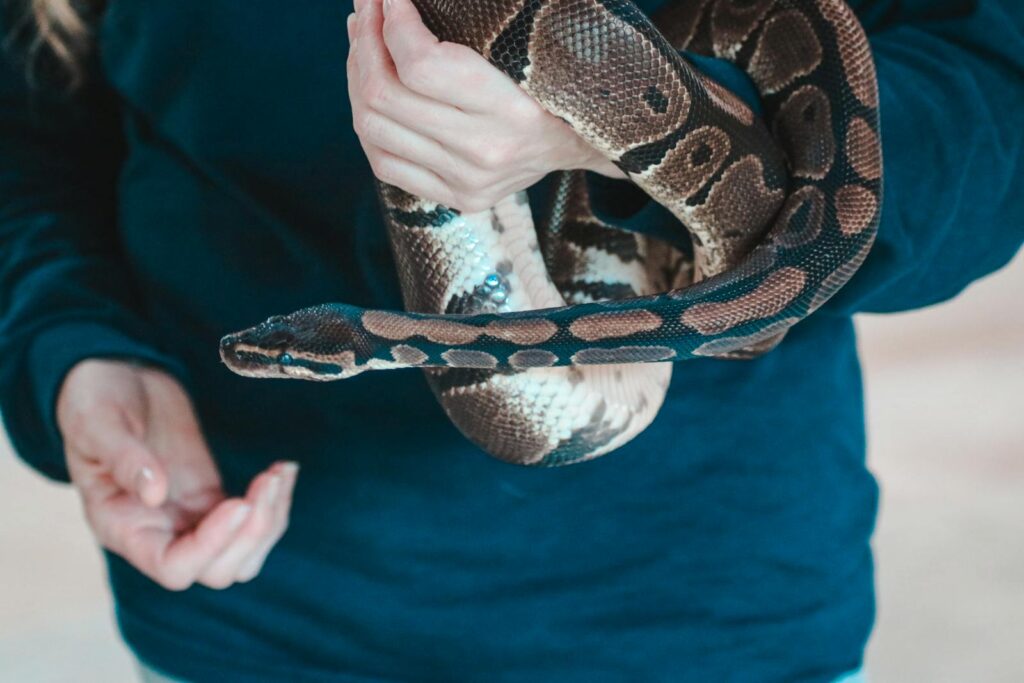
Ball pythons (Python regius) have earned their reputation as the quintessential beginner snake due to their gentle disposition and manageable size. Rarely exceeding 5 feet in length, these African natives derive their name from their defensive behavior of curling into a tight ball when stressed, rather than striking at perceived threats. Their docile temperament typically allows for regular handling once they’ve acclimated to their environment, with many owners reporting their ball pythons seem to enjoy gentle interaction. With proper care, these pythons can live 20-30 years in captivity, making them a long-term companion for dedicated keepers who appreciate their calm demeanor and striking color morphs that range from natural patterns to vibrant designer variations.
Corn Snakes: Colorful and Curious Companions
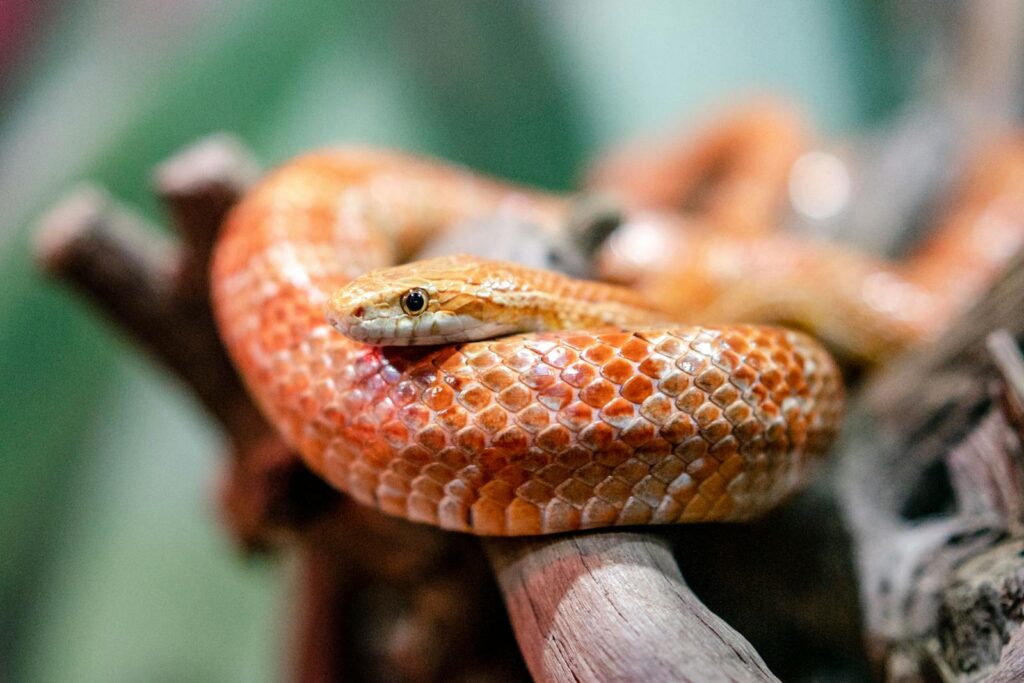
Corn snakes (Pantherophis guttatus) stand out as exceptional pets due to their curious nature, manageable size, and striking color variations. Native to the southeastern United States, these colubrids typically grow to 3-5 feet in length and possess a temperament that’s both inquisitive and remarkably tolerant of handling. Their naturally active disposition makes them fascinating to observe as they explore their environments, while their reluctance to bite even when startled has endeared them to generations of snake enthusiasts.
Corn snakes are known for their exceptional feeding response in captivity, readily accepting appropriately sized frozen-thawed rodents and demonstrating none of the feeding difficulties that sometimes challenge new snake keepers with other species. With lifespans averaging 15-20 years and minimal space requirements compared to larger constrictors, corn snakes offer the perfect balance of engaging behavior and practical husbandry for both apartment dwellers and suburban households.
Kingsnakes: Hardy and Handleable
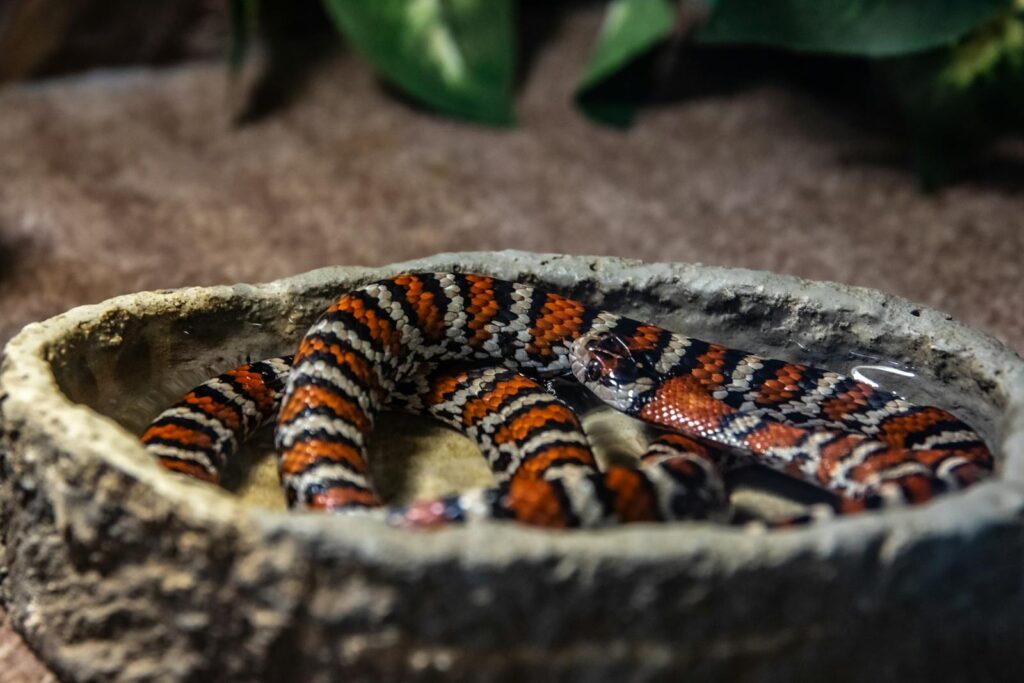
Kingsnakes (Lampropeltis species) represent some of the most resilient and adaptable pet snakes available in captivity, thriving under a wide range of conditions that might stress more delicate species. These North American natives earn their regal name from their remarkable ability to prey upon other snakes in the wild, including venomous species, though in captivity they contentedly accept a diet of rodents. Most kingsnake species remain under 4-5 feet in length, with the popular California kingsnake (Lampropeltis californiae) displaying striking black and white banded or striped patterns that captivate enthusiasts. Their naturally inquisitive temperament translates to snakes that actively explore during handling sessions, making them engaging companions that rarely display defensive behaviors once acclimated to regular interaction. Kingsnakes’ reputation for hardiness extends to their feeding habits as well, with most individuals maintaining robust appetites throughout their 15-20 year lifespan and rarely refusing meals like some more temperamental species might.
Milk Snakes: Vibrant and Versatile
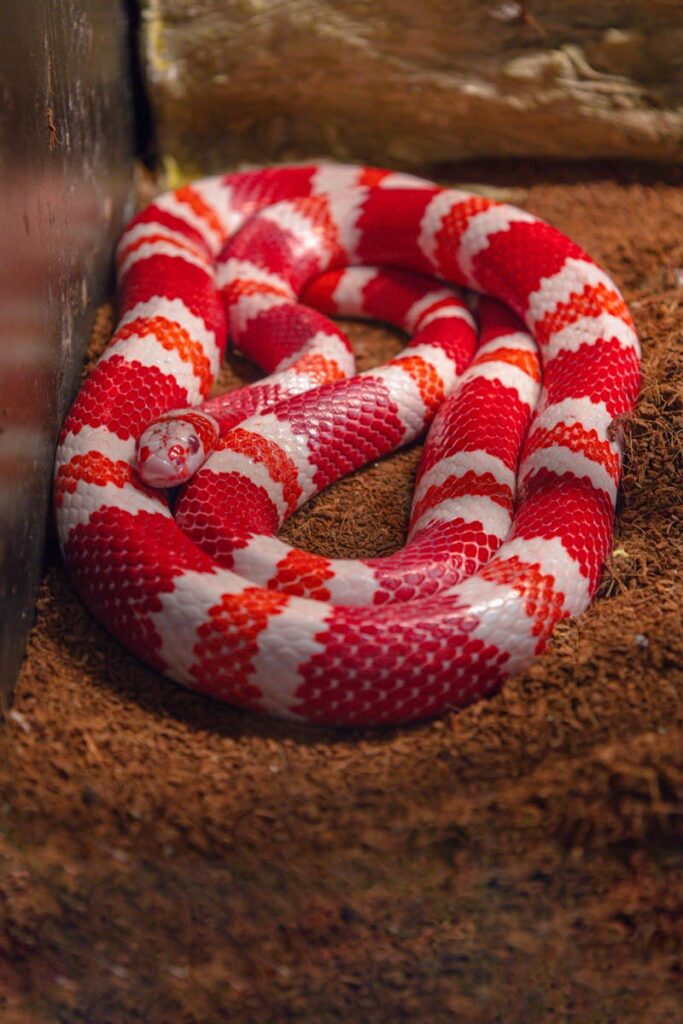
Milk snakes (Lampropeltis triangulum subspecies) offer pet owners a stunning array of color patterns within a manageably-sized package, rarely exceeding 4 feet in length for most subspecies. These close relatives of kingsnakes display some of the most vibrant natural coloration in the snake world, with many subspecies featuring the iconic red, black, and yellow/white banding that mimics the warning coloration of coral snakes—though milk snakes are completely harmless. Young specimens occasionally display defensive behaviors like tail vibrating or musking, but with gentle, consistent handling, most individuals grow into exceptionally tame adults that tolerate interaction with calm curiosity. Their husbandry requirements remain straightforward with simple enclosure needs, moderate temperature gradients, and a willingness to accept frozen-thawed rodents that makes feeding time stress-free for keepers. The various subspecies offer different color patterns and slight size variations, allowing enthusiasts to select specific geographic variants that appeal to their aesthetic preferences while maintaining the same friendly temperament throughout the genus.
Rosy Boas: Compact Desert Gems
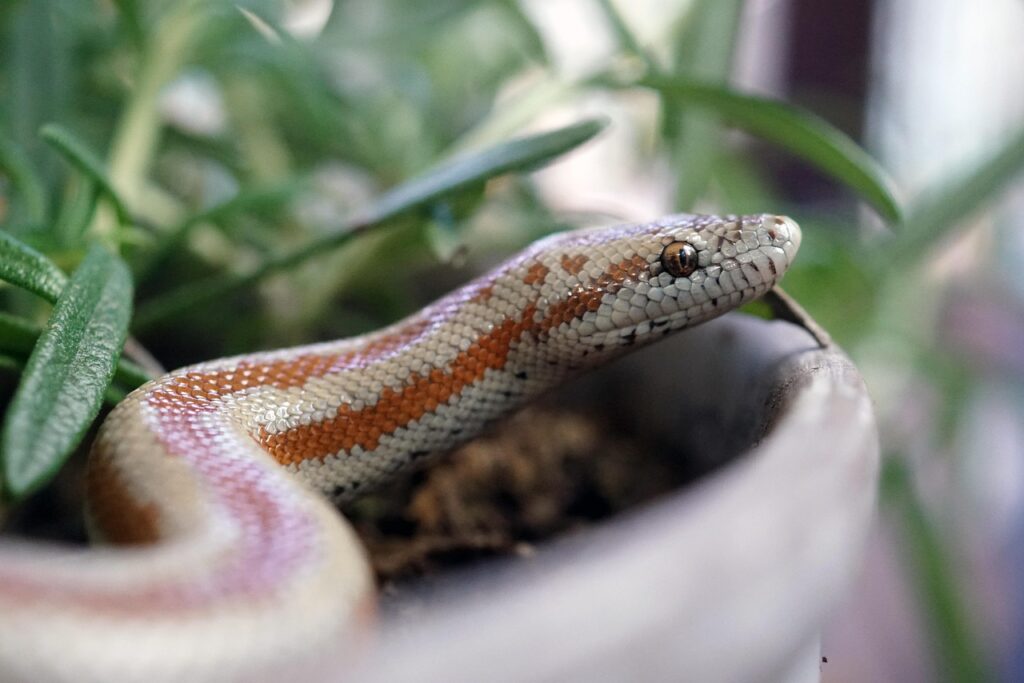
Rosy boas (Lichanura trivirgata) represent one of the smallest and most manageable constrictor species available in the pet trade, with adults typically reaching only 2-3 feet in length. Native to the southwestern United States and northwestern Mexico, these desert dwellers possess a gentle, slow-moving demeanor that makes them ideal for keepers who prefer a more relaxed handling experience compared to the active exploration of species like corn snakes. Their thick-bodied yet compact build gives them a substantial feel during handling despite their modest length, creating a satisfying tactile experience that many keepers appreciate.
Rosy boas demonstrate remarkable tolerance for handling, rarely displaying defensive behaviors even when startled, and instead typically freezing momentarily before continuing their unhurried exploration of their handler. With care requirements centered around moderate temperatures, low humidity, and simple enclosure furnishings that mimic their arid native habitat, rosy boas represent one of the most straightforward snakes to maintain in captivity while still offering the fascinating behavioral traits that draw people to snake keeping.
Children’s Pythons: Small Australian Charmers
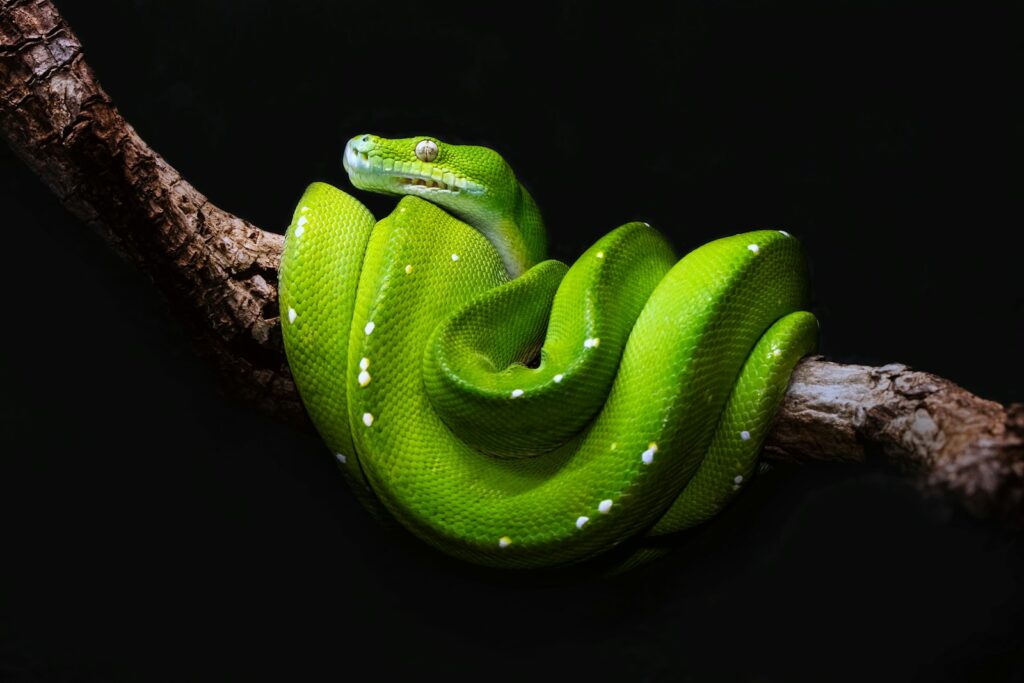
Children’s pythons (Antaresia childreni)—named for naturalist John George Children rather than for their suitability for young keepers—offer the python experience in a compact package rarely exceeding 3 feet in length. These Australian natives display a temperament that balances curiosity with calmness, creating an engaging handling experience without the nervous energy that can make some colubrids challenging for beginners to manage.
Their modest size requirements mean that adult specimens can thrive in enclosures as small as 20-30 gallons, making them practical choices for keepers with space limitations who still desire a python species. Children’s pythons demonstrate remarkable adaptability to captive life, with established bloodlines typically feeding readily on appropriately sized mice and showing none of the periodic fasting behaviors that can concern novice keepers of other python species.
Their nocturnal nature means they’re often most active during evening handling sessions, though they quickly adjust to interaction at any time once acclimated to a regular routine with their keeper.
Sand Boas: The Burrowing Beauties
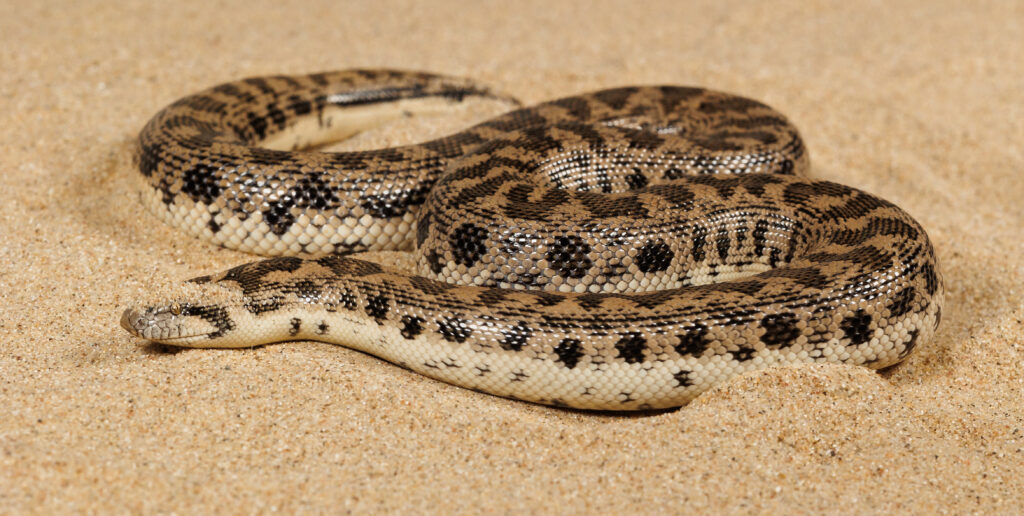
Sand boas (Eryx species) offer a distinctly different snake-keeping experience with their specialized burrowing lifestyle and extraordinarily gentle temperament. The Kenyan sand boa (Eryx colubrinus) represents the most commonly kept species, with females rarely exceeding 2-3 feet and males often staying under 20 inches, making them one of the smallest constrictor species available in captivity. Their stout bodies and blunt heads reflect evolutionary adaptations for a fossorial lifestyle, spending much of their time beneath a substrate layer where only their eyes and nostrils remain visible while waiting for prey.
Despite their secretive nature, sand boas typically display remarkable tolerance for handling, rarely offering defensive displays and instead calmly exploring their handler with gentle, probing movements that reflect their specialized sensory adaptations. Their husbandry centers around providing appropriate burrowing substrate and moderate temperatures, with their compact size allowing comfortable housing in enclosures as small as 10-20 gallons for life, making them ideal for keepers with space constraints who desire a uniquely specialized reptile companion.
Gopher Snakes: Robust and Reliable
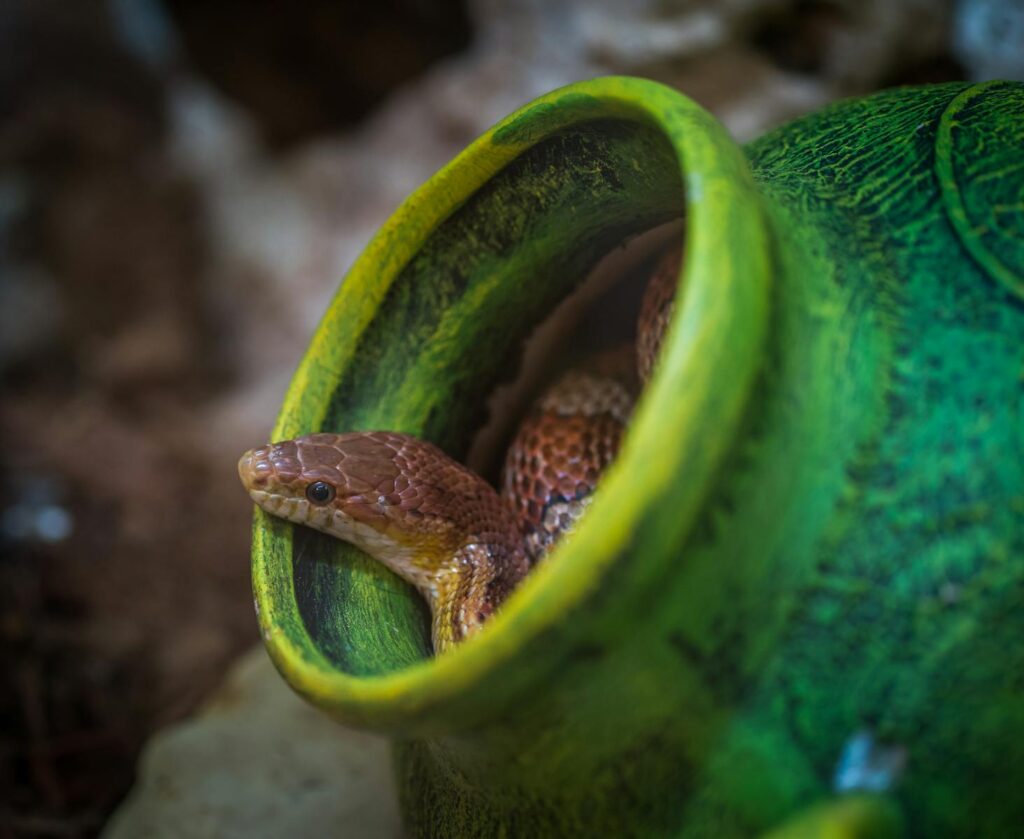
Gopher snakes (Pituophis catenifer) represent some of North America’s most impressive native colubrids, combining substantial size with generally amenable temperaments once acclimated to regular handling. These powerful constrictors can reach 5-7 feet in length, offering the impressive presence of larger snakes without the extreme spatial requirements or feeding concerns of giant constrictors like Burmese pythons. Wild-caught specimens may initially display dramatic defensive displays including hissing, vibrating tails, and flattening their heads to mimic rattlesnakes, but captive-bred individuals typically settle into docile companions with consistent gentle handling.
Their active, curious nature during handling sessions creates an engaging experience, as they methodically explore their surroundings while using their muscular bodies to securely grip their handler for stability. Gopher snakes demonstrate exceptional hardiness in captivity, thriving under a wide temperature range and rarely developing the respiratory infections that plague more humidity-dependent species, making them forgiving pets for keepers still mastering environmental management.
Hognose Snakes: Theatrical Personalities

Western hognose snakes (Heterodon nasicus) combine modest size with outsized personalities, making them among the most characterful species available in the reptile hobby. Rarely exceeding 3 feet in length (with males typically much smaller), these North American natives are instantly recognizable by their upturned snouts used for digging in their natural sandy habitats. When initially startled, hognoses put on an elaborate but harmless defensive display that includes flattening their necks, hissing dramatically, and sometimes performing exaggerated mock strikes with closed mouths, earning them the nickname “drama noodles” among enthusiasts.
Despite their theatrical tendencies, most hognoses calm down remarkably with regular handling, becoming docile companions that rarely follow through on their bluffing behaviors. It’s worth noting that while hognose snakes are rear-fanged with mild venom used for subduing amphibian prey, this poses no significant medical concern for humans, with reactions typically limited to minor localized swelling in the rare event of a bite, placing them firmly in the category of safe pet species for responsible keepers.
African House Snakes: Underrated Gems
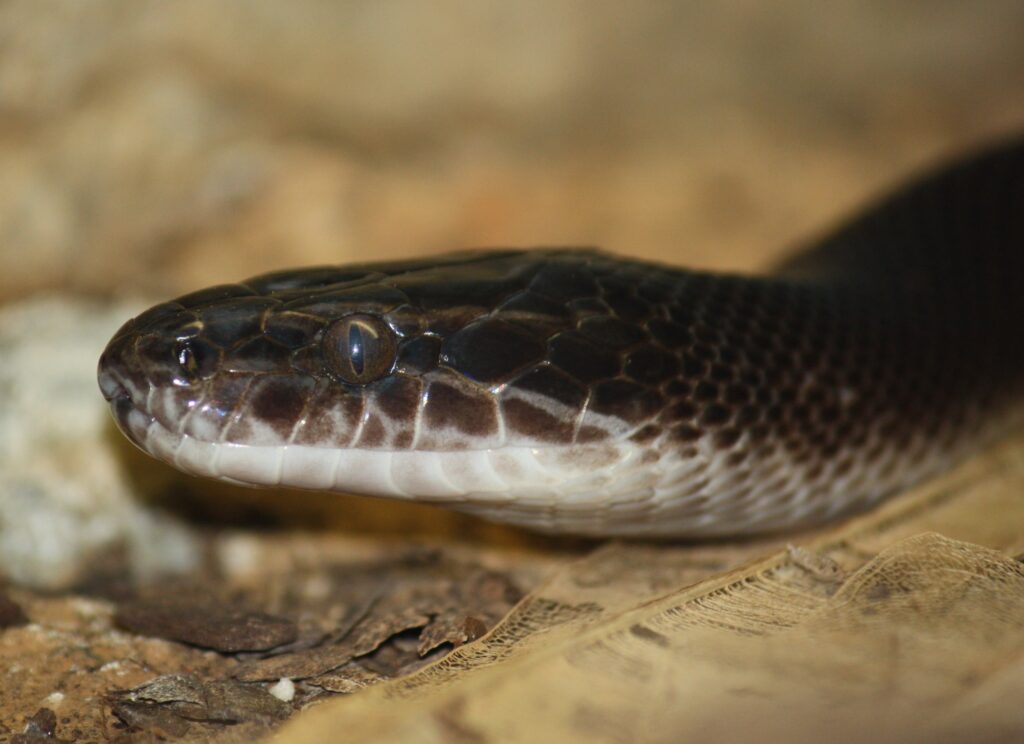
African house snakes (Boaedon species, formerly Lamprophis) represent some of the hobby’s most underappreciated species, combining docile temperaments with manageable size and straightforward care requirements. Typically reaching 3-4 feet in length, these glossy-scaled colubrids native to sub-Saharan Africa demonstrate remarkable adaptability to captive conditions, thriving in standard terrestrial setups with minimal specialized requirements. Their natural history as adaptable generalists that often live near human settlements translates to captive specimens that rarely demonstrate stress behaviors and typically maintain excellent feeding responses on appropriately sized rodent prey.
Most captive-bred specimens display a calm curiosity during handling sessions, neither frantically attempting escape nor freezing in fear, instead methodically exploring their handlers with gentle, purposeful movements. Their modest size requirements mean that a pair can be comfortably housed in a 40-gallon enclosure for life, making them practical choices for apartment dwellers or keepers with limited space who still desire an active, visible snake species with an amenable temperament.
Carpet Pythons: For the Experienced Handler
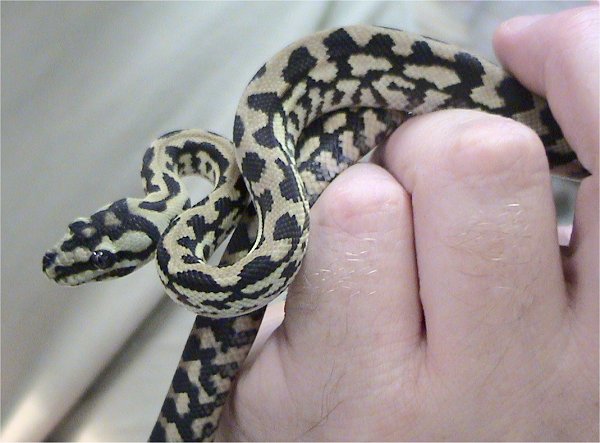
Carpet pythons (Morelia spilota subspecies) represent an excellent “step-up” species for keepers who have mastered beginner snakes and desire a larger, more impressive python with generally manageable temperaments. These Australian and New Guinean pythons display remarkable diversity across their subspecies, with the popular Jungle Carpet python offering vibrant yellow-and-black patterning while the Diamond python showcases a stunning array of iridescent scales that shimmer in direct light. While young specimens can sometimes be defensive or nippy, regular gentle handling typically produces adults that tolerate interaction well, particularly with captive-bred specimens from established bloodlines selected for temperament.
Their adult size of 5-7 feet for most subspecies provides an impressive presence without reaching the potentially dangerous dimensions of giant constrictors, creating a satisfying handling experience for keepers prepared for their moderate strength and active disposition. Carpet pythons’ semi-arboreal nature in the wild translates to captive specimens that utilize vertical space, creating fascinating display animals that can often be observed climbing and exploring branches when provided with appropriate cage furnishings.
Responsible Ownership and Care Considerations
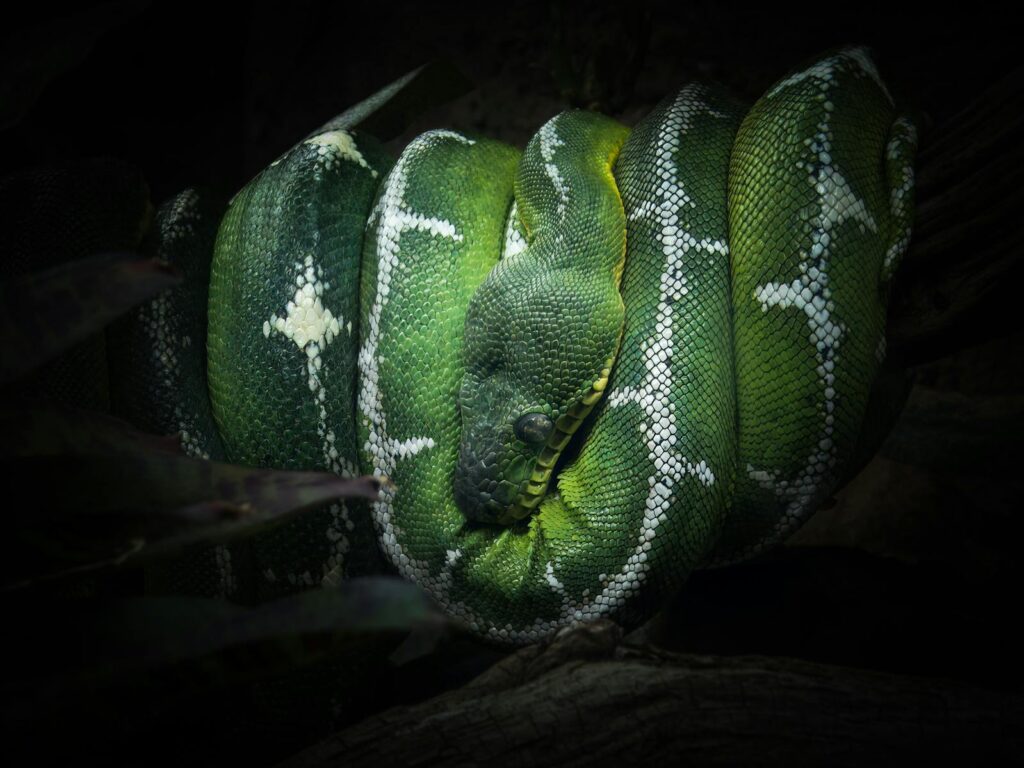
Regardless of a snake’s reputation for docility, responsible ownership begins with researching specific care requirements for your chosen species well before acquisition. Each species requires appropriate enclosure size, temperature gradients, humidity levels, and hiding spots to thrive, with inadequate conditions potentially leading to stress behaviors or health issues that can manifest as defensive responses during handling attempts.
Prospective owners should honestly assess their comfort level with feeding whole prey items, as all pet snakes require vertebrate prey in the form of mice, rats, or in some cases, appropriate reptile diets. First-time snake keepers should strongly consider purchasing captive-bred specimens from reputable breeders rather than wild-caught animals, as the former typically demonstrate better adjustment to captivity, more reliable feeding responses, and fewer parasite concerns.
Perhaps most importantly, potential owners must consider the lifespan commitment, with most species mentioned requiring 15-30 years of dedicated care, making them poor choices for temporary or novelty pets despite their relatively low daily maintenance requirements.
Understanding Snake Body Language
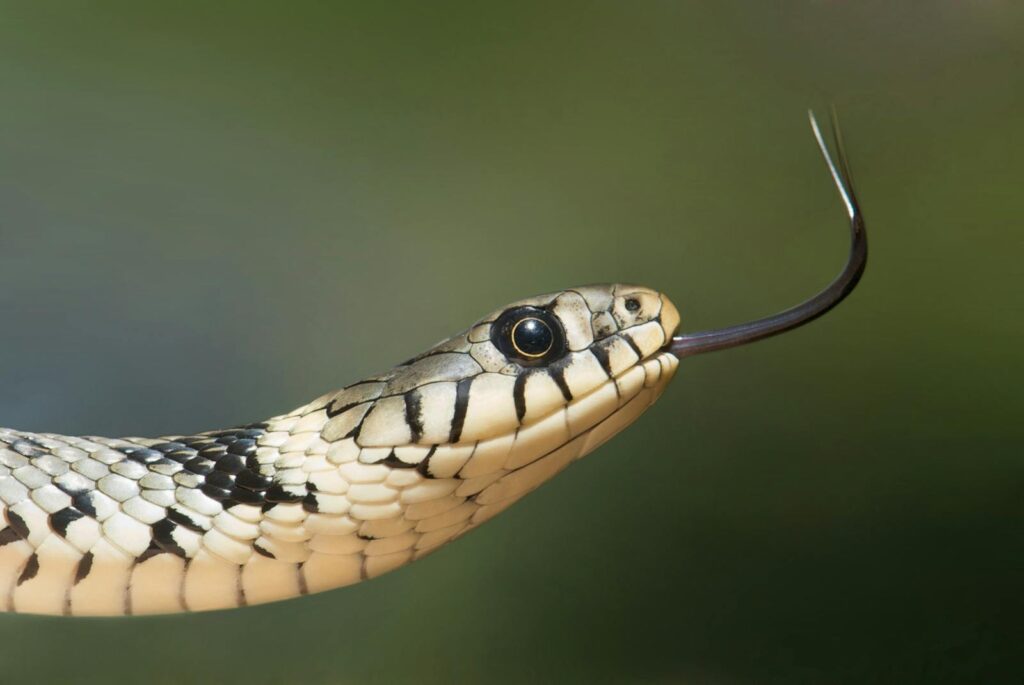
Developing the ability to read your snake’s body language represents one of the most crucial skills for fostering a positive relationship with your reptilian companion, regardless of species. Defensive postures including tight body coiling, raised head position, hissing, or rapid retreating movements indicate a snake that feels threatened and should be given space rather than forced into handling situations. Conversely, relaxed muscle tone, slow tongue flicking, and calm, deliberate movement patterns typically signal a snake that is comfortable with its current situation and more amenable to gentle interaction. Successful handlers learn to recognize their individual snake’s baseline behaviors and respect when the animal signals discomfort, understanding that forcing handling during these times can damage trust and potentially result in defensive responses.
Most importantly, keepers should recognize that even the most docile species have individual personalities and preference variations, with some individuals showing greater tolerance for handling than others of the same species—a reality that requires adaptable expectations rather than disappointment when a snake doesn’t match the “typical” temperament described for its kind.
Building Trust Through Proper Handling Techniques
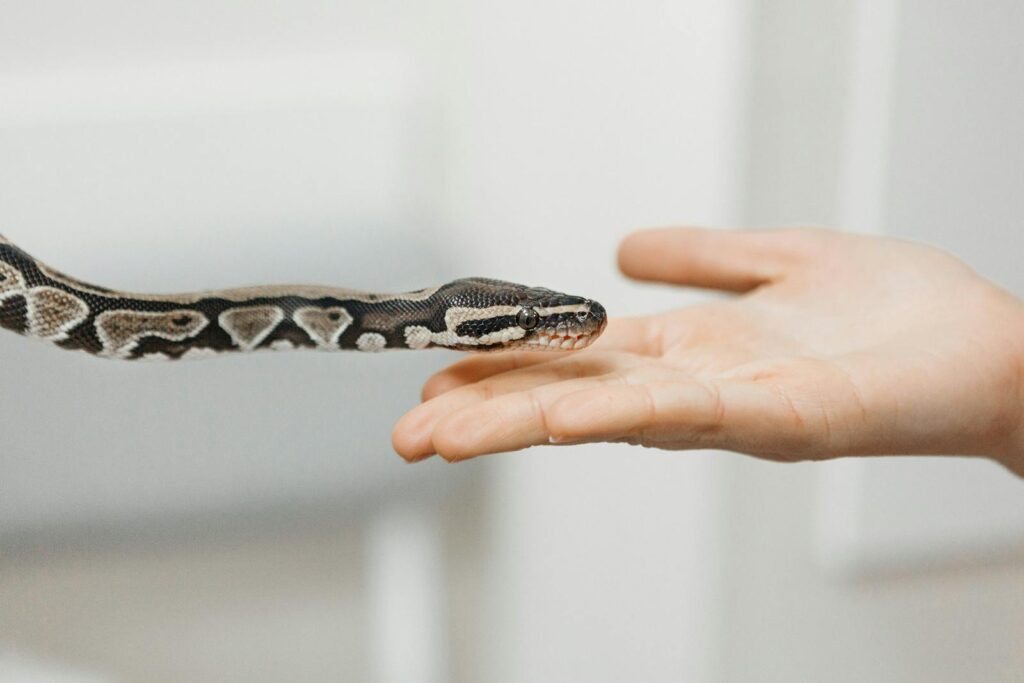
Developing a positive handling relationship with any snake species requires consistent application of techniques that respect the animal’s natural behaviors while minimizing stress. Successful handling begins with proper support, always providing full body support rather than dangling portions of the snake unsupported, which can trigger insecurity and defensive responses even in typically docile species. Approaching snakes from the side rather than from above helps prevent triggering predator-avoidance responses, as aerial threats represent significant dangers to snakes in their natural environments. For most species, limiting initial handling sessions to 5-10 minutes and gradually increasing duration as the snake demonstrates comfort helps build positive associations without overwhelming the animal during the acclimation period. Perhaps most importantly, handlers should avoid interactions immediately after feeding (48-72 hours for most species) and during shedding periods when vision is compromised and physical sensitivity is heightened, creating natural periods of heightened defensive behavior even in normally docile individuals. By respecting these basic principles of snake psychology, keepers can foster positive relationships with any of the friendly species detailed in this article, creating rewarding companionship with these fascinating reptiles.
The world of non-venomous pet snakes offers remarkable diversity in size, appearance, and personality, with numerous species demonstrating the calm, handleable temperaments that make for rewarding companion animals. From the beginner-friendly ball python to the characterful hognose snake, prospective owners can find species that match their experience level, spatial constraints, and handling preferences. With proper research, preparation, and consistent gentle handling techniques, these remarkable reptiles can form decades-long bonds with their keepers, offering unique perspectives into the fascinating world of reptile behavior. By selecting from these friendly species and committing to their specific care requirements, new snake enthusiasts can embark on a rewarding journey into reptile keeping with confidence in both their safety and the wellbeing of their scaly companions.

